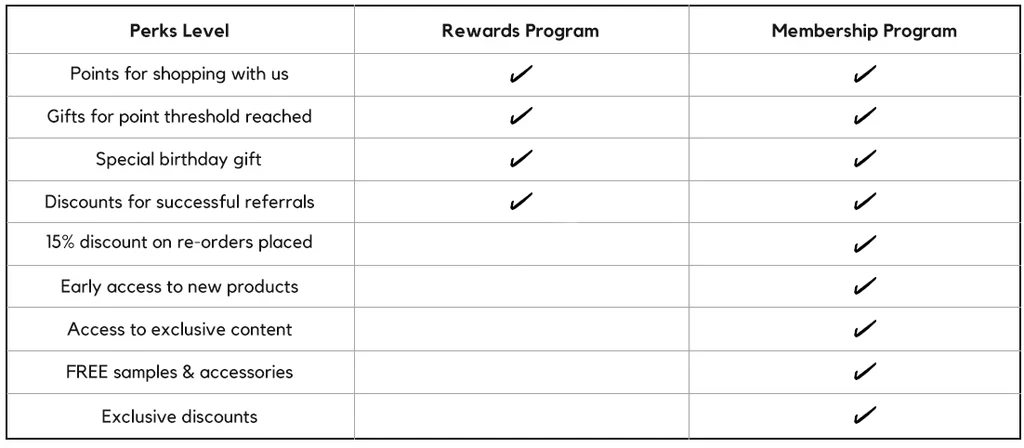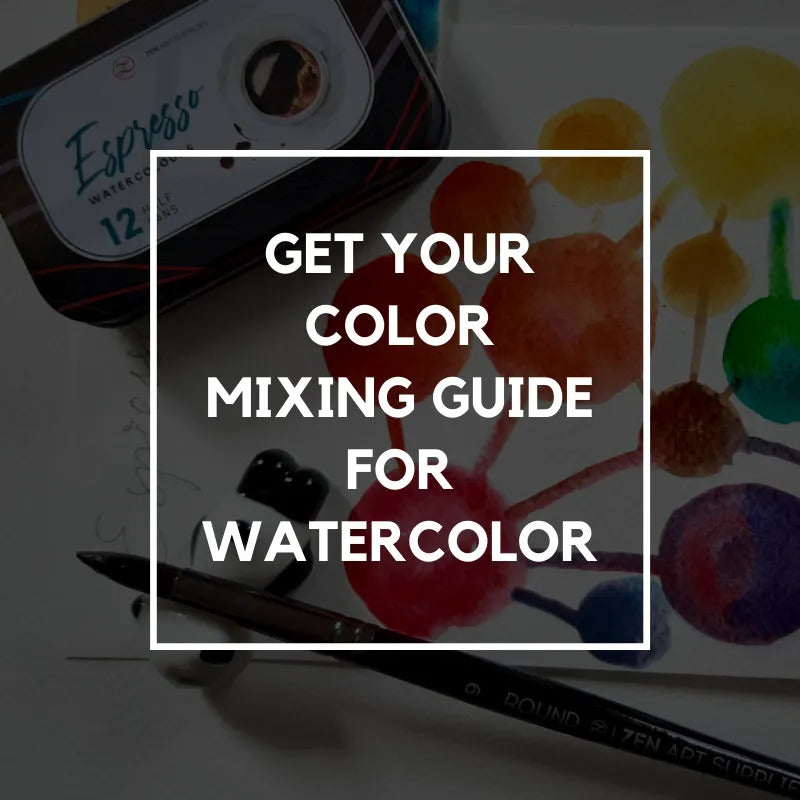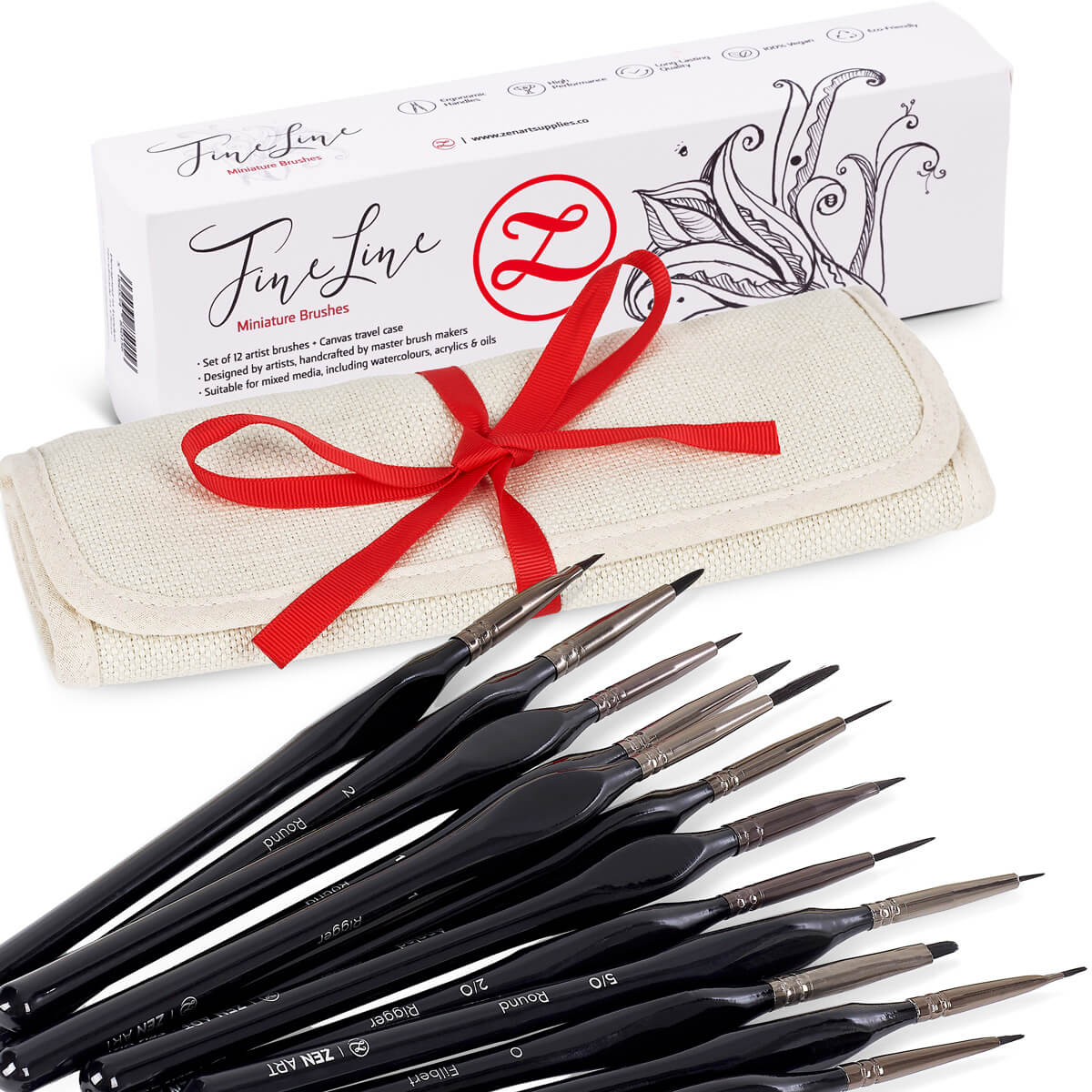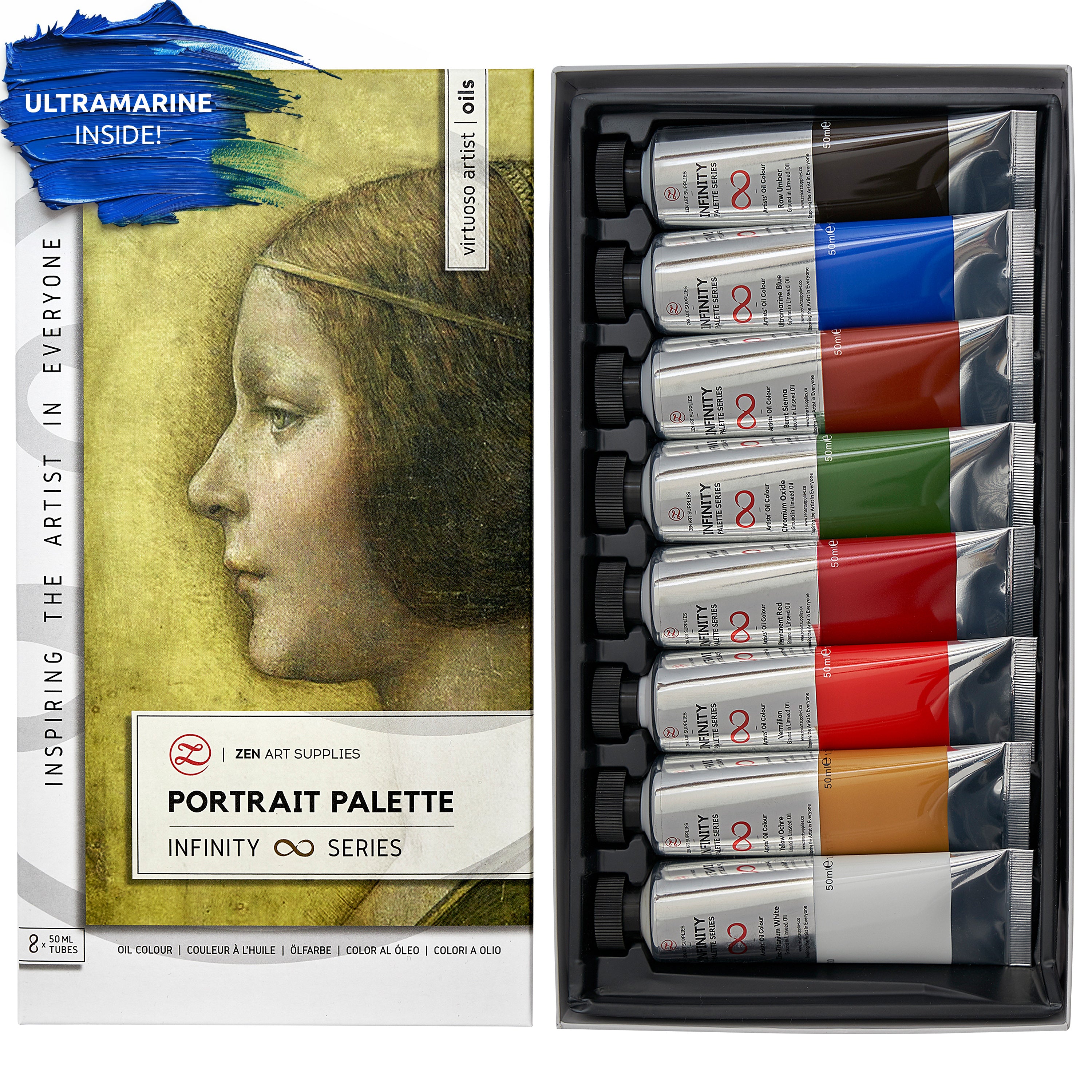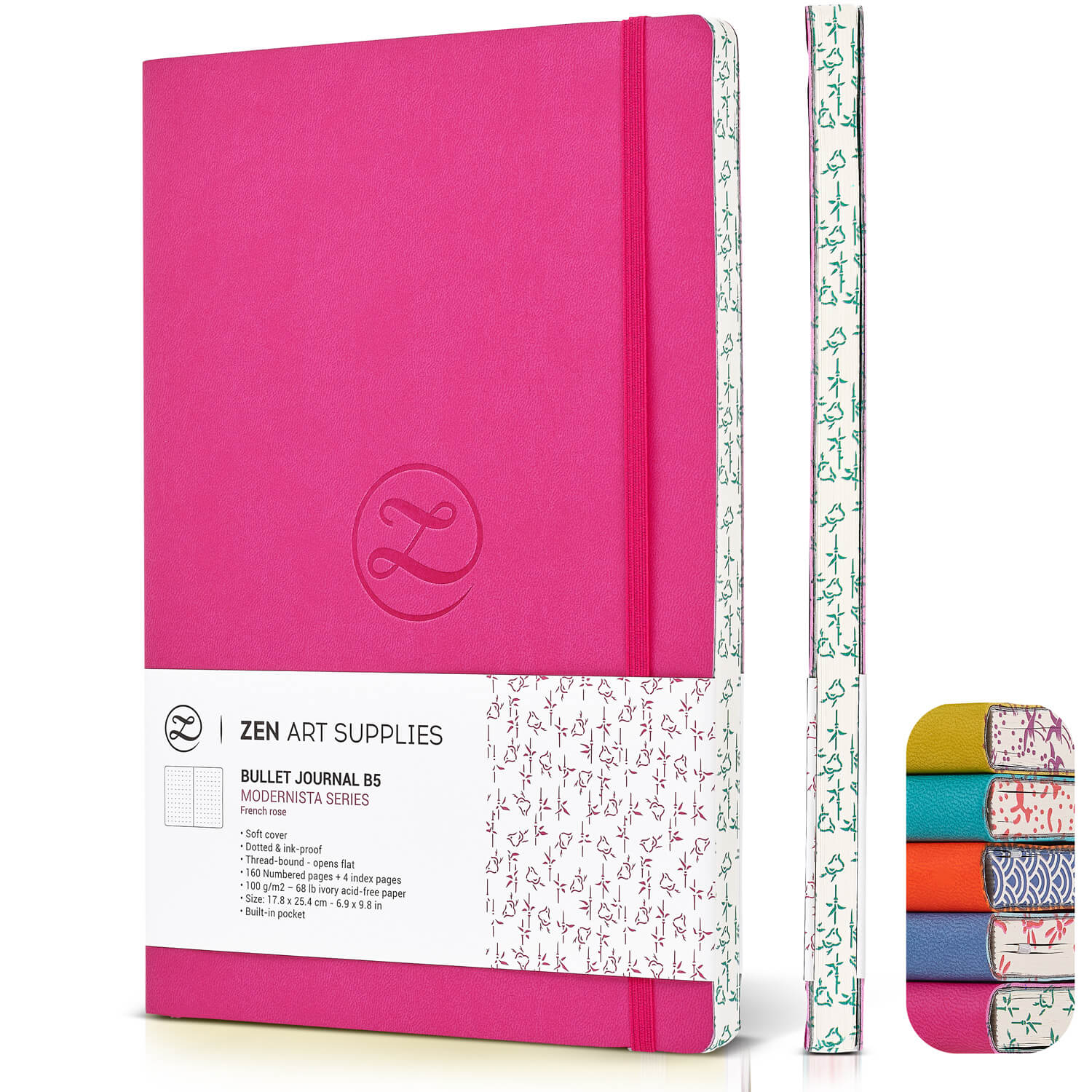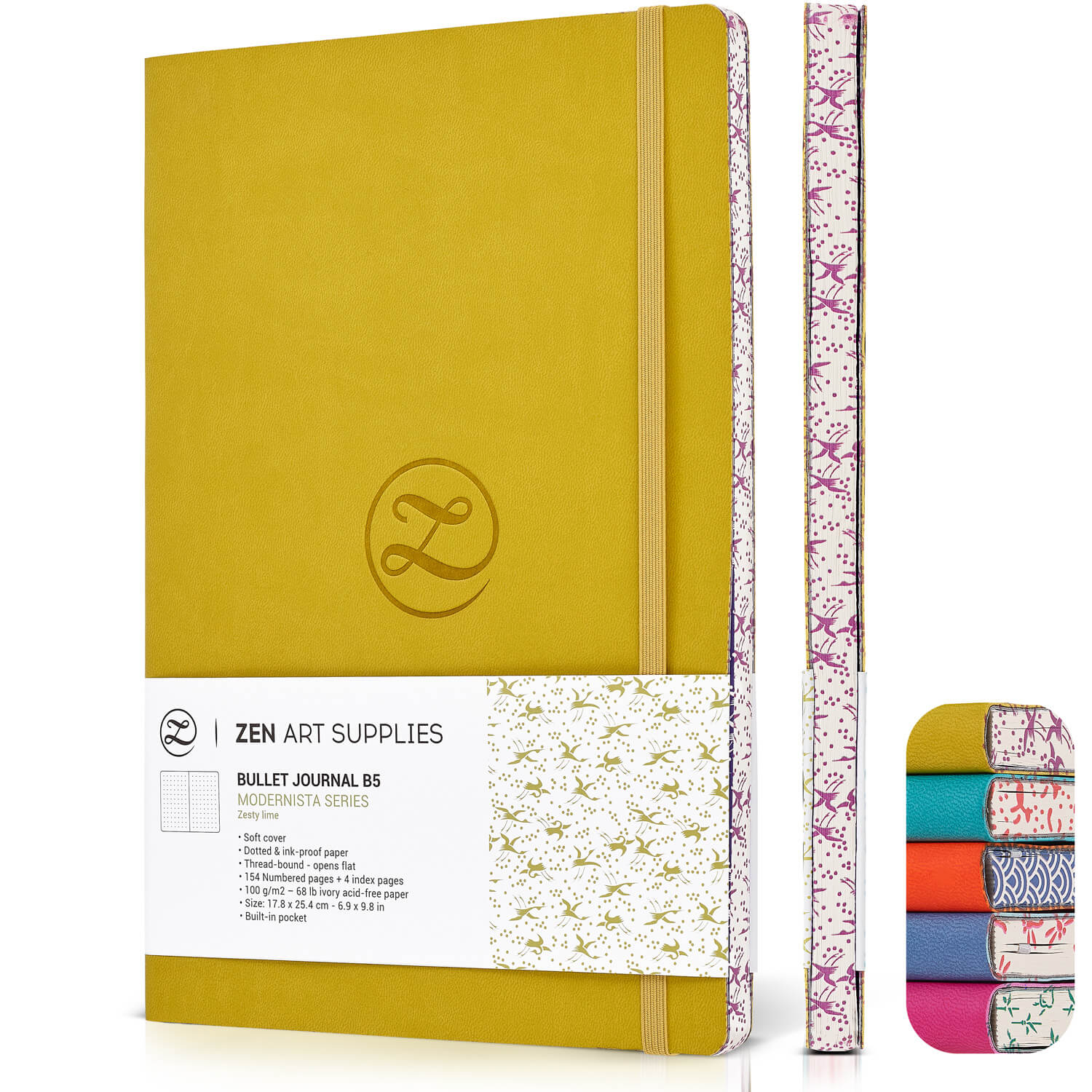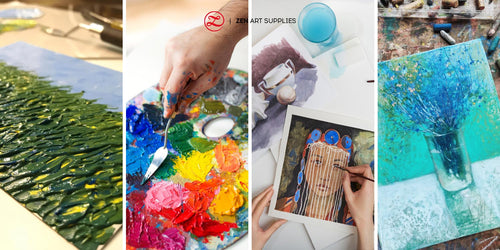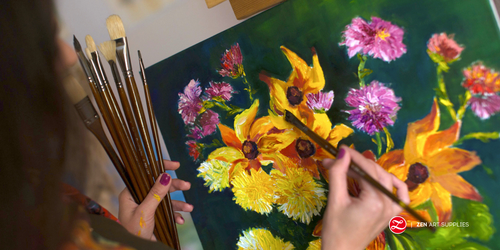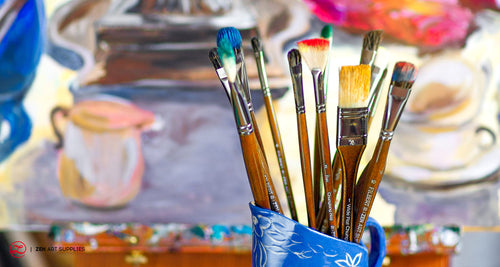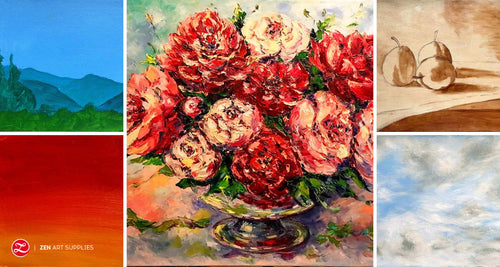What is a limited palette? | What are the basic oil paint colors? | Other Things To Consider
Find out the basic oil paint colors you'll ever need to start your oil painting adventures! Discover in the video above why ZenART's co-founder Ardak Kassenova strongly advocates learning how to work with a limited palette.
Before you head on to learning about the basic oil paint colors, why not learn the watercolor painting techniques as well. You'll find helpful tips along with a video showing the process of each technique in the article.
TABLE OF CONTENTS: Looking for something in particular? Jump ahead using the links below:
What is a limited palette?
What are the basic oil paint colors?
Other Limited Palettes
What is the best oil paint for beginners?
Other Things To Consider With Oil Paint Colors
What colors should I buy for oil painting?
Have you been thinking about trying out painting in oil? You might find yourself too overwhelmed with the number of color choices you find at the art store. I know I definitely was when I was starting out. You have a limited budget and yet before you are more than a hundred colors to choose from! The good news is that there's no need to buy the whole array of oil paint colors on offer out there. You only need the basic oil paint colors to start with. I was encouraged by my teachers in school to work with a limited palette and mix all the colors I needed from it. It was very challenging, but it was also quite rewarding to be able to slowly master the art of color mixing.
What is a limited palette?
A limited palette is exactly what it sounds like - you work with a minimal number of colors. The Impressionists were great masters in this regard, they enjoyed painting en plein air and so they didn't care to lug around too many materials. The usual limited palettes are made up of eight colors, though the oil paint colors vary depending on each artist's preference. And will be greatly influenced by their subject choice as well.

Our co-founder, Ardak Kassenova, is a great supporter of working with limited palettes. There is much to be said about simplifying your color choices so that you can focus on more important things such as getting the right values and tonality of your painting. With this in mind, she envisioned the three limited oil paint palettes of ZenART Supplies. Each palette collection covers a specific painting style or subject, and the most probable colors needed were carefully chosen.
What are the basic oil paint colors?
If you're just starting out and you're not sure yet what you'd like to paint, then I suggest getting the colors you'll find in ZenART's most aptly named Essential Palette from the Infinity Series oil paint palettes. You can mix almost any color you'll need for a great number of subjects. It's the perfect set to start out with and explore. This palette contains 6 primary colors out of the 8 tubes.
What are the primary colors?
If you can still recall from school, the primary colors are those that you can't get from mixing other colors. They are pure and are the foundation of all the other colors. The primary colors are red, yellow, and blue.

Here are the colors you'll find in the Essential Palette set:
- Cadmium Yellow Hue
- Cadmium Yellow Deep Hue
- Alizarin Crimson
- Cadmium Red Hue
- Cerulean Blue
- Cobalt Blue
- Titanium White
- Ivory Black
They're the essential oil paint colors you need for any proper color mixing that you want to learn. But why two of each primary color you ask? Well, to be able to mix both the vibrant and muted secondary and tertiary colors, you'll need two kinds of primaries - a warm one, and a cool one.
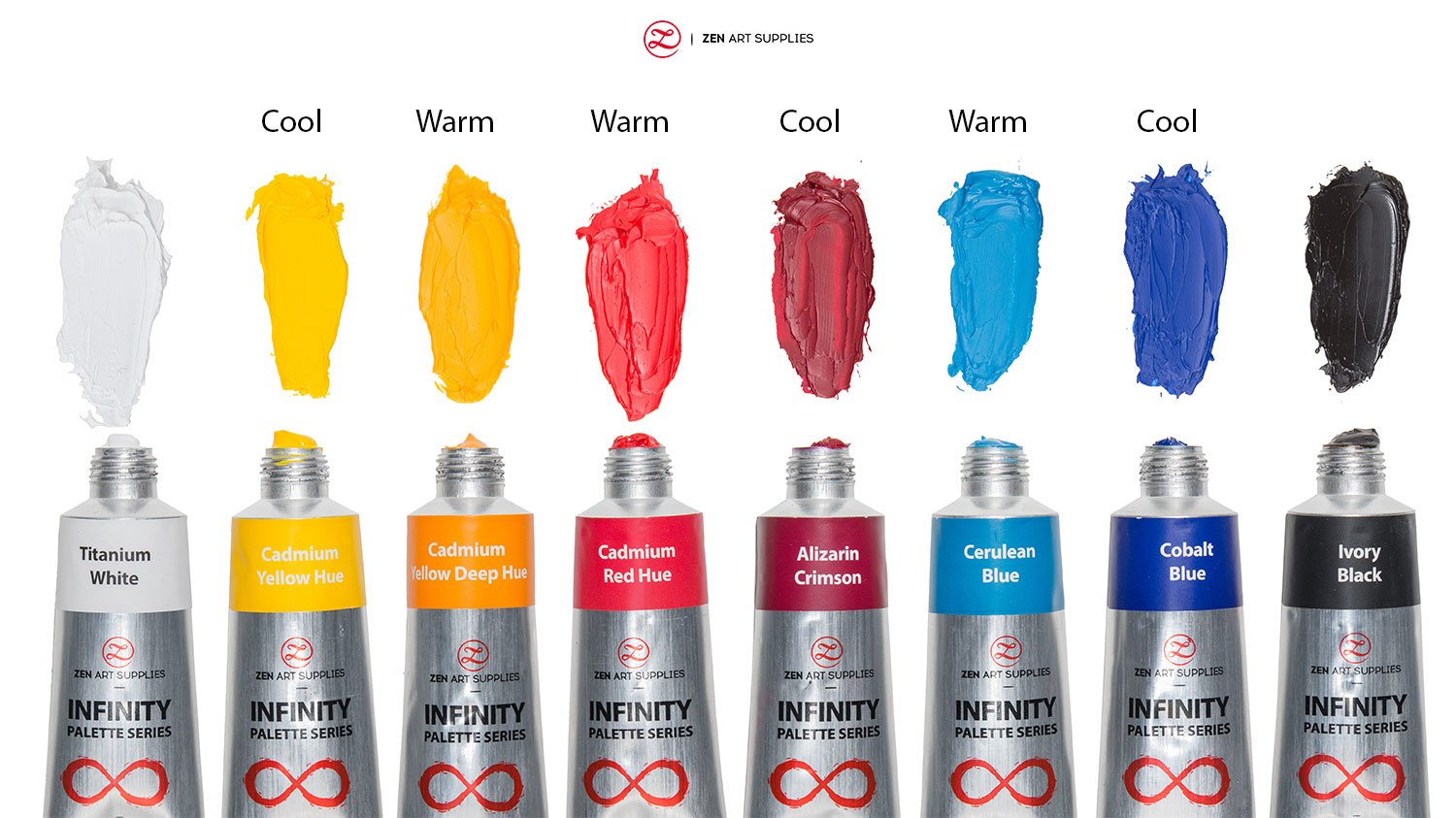
I'll use the basic oil paint colors from the Essential Palette seen above to mix the secondary colors. Let's see what color vibrancies and subtleties we get by mixing the 6 warm and cool primary colors from this palette.
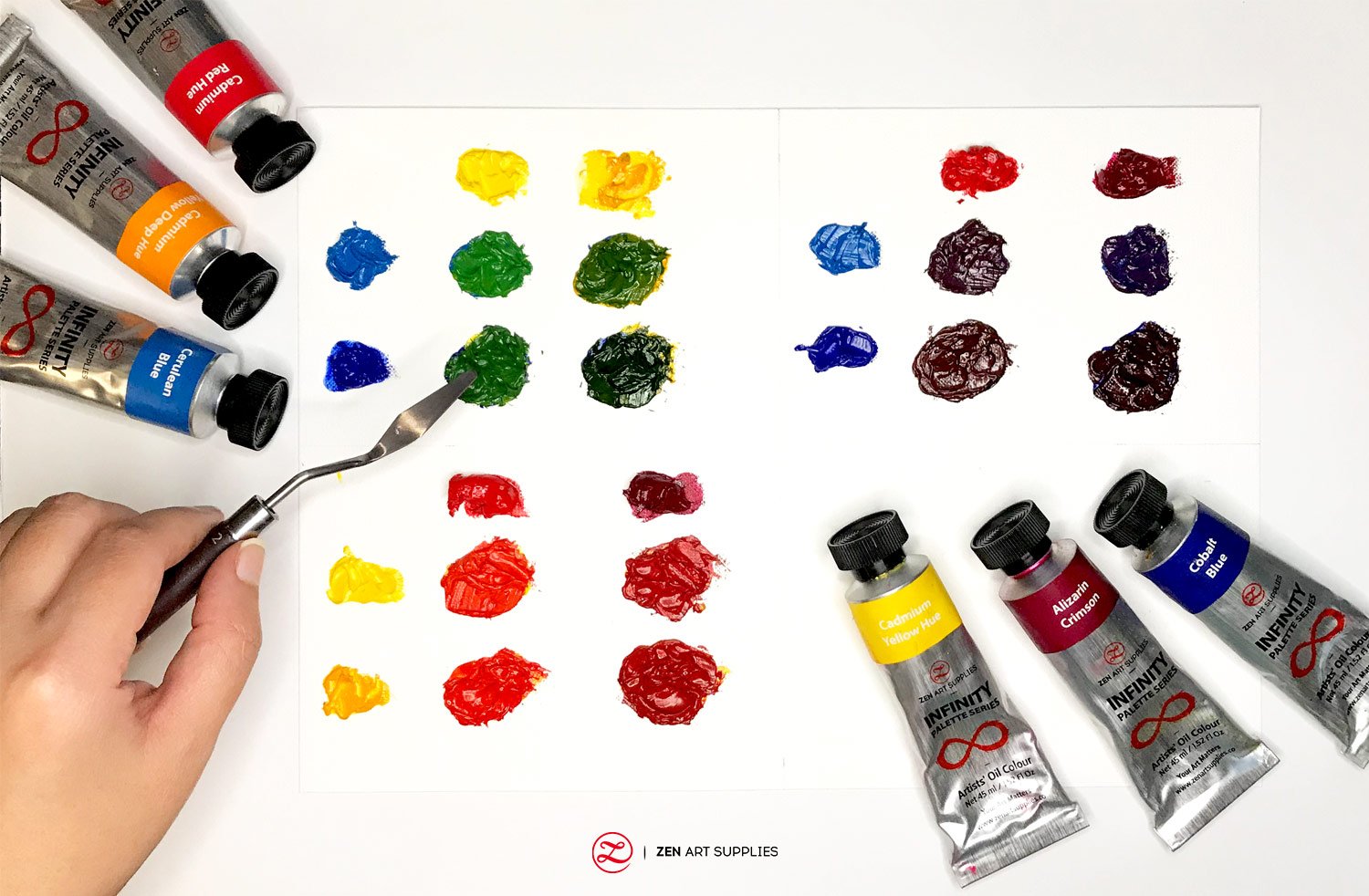
Other Limited Palettes
The Limited Palette for Mixing Skin Tones
In my case, a lot of my paintings' subjects are of people, I'm drawn to the human element. Therefore, a limited palette that caters to an easier skin tone mixing process is such a huge help. ZenART's Portrait Palette contains all the colors you need to mix a wide range of skin tones from dark to pale. For a deeper dive into mixing the various skin tones, have a look at our Oil Painting Skin Tones article.
The colors included in the Portrait Palette are as follows:
- Yellow Ochre
- Vermillion
- Naphthol Red
- Chromium Oxide
- Burnt Sienna
- Burnt Umber
- Raw Umber
- Zinc-Titanium White

As you can see, this limited palette consists mostly of earthy, more subdued colors. Take a look below at ZenART's co-founder Ardak Kassenova's very own skin tone mixing by using just the basic oil paint colors from the Portrait Palette.

The Limited Palette for Impressionistic Painting
This is the perfect limited palette for those inspired by the Impressionists' painting style, as these are the colors that they used. Most of the paints in this palette are of jewel-like colors and have a more transparent opacity, making them very ideal for shading and layering. Their level of transparency also makes it easier for them to be blended easily and beautifully with other colors.
Here are the colors you will find in the Impressionist Palette:
- Lemon Yellow
- Indian Yellow
- Rubine Red
- Dioxazine Purple
- Viridian
- Ultramarine Blue
- Prussian Blue
- Titanium White


Look at all the beautiful colors mixed in the wooden palette above. I see colors that look like a field of flowers, beautiful sea blue-greens, and a bright blue sky on a cloudless day. It's easy to understand why the Impressionists chose these colors as they were quite the advocates for plein air painting. They painted a lot of landscapes and other outdoor scenery at different times of the day and in different weather conditions and seasons.
Learn more about the history behind the colors used by the Impressionists and how they worked with a limited number of oil paint colors in this article - Rainbow Colors of the Impressionists.
What is the best oil paint for beginners?
The best oil paints for beginners are those that aren't too cheap nor too expensive. Since you only need to purchase a limited palette of colors, I suggest you invest in the good quality ones. I find that cheap paints are too runny with varying consistencies, making them a bit trickier to mix. While the very expensive ones will discourage you from experimenting and exploring all you can - because they're too expensive and you don't want to waste them. With our Essential Palette from our Infinity Series oil paint palettes, you get 8 professional grade oil paints (45ml per tube) at a very affordable price. And they're also non-toxic and free from harmful driers and solvent fumes!

Other Things To Consider With Oil Paint Colors
Color is not the only thing that can affect your color mixtures and your final painting. It's good to know about the pigments, the lightfastness, and the opacity of your oil paints.
Pigments
Pigments are what gives your colors their color. In the past, pigments were mostly derived from minerals, plants, clay, charcoal, and other organic materials. Through time, more and more synthetic pigments are created and manufactured.
Nowadays, paints are made from one, two, three, or even more pigments. When starting out it's best to choose paints that contain a single pigment, at the most two. That way you will be able to observe how each pigment can be used and how it mixes and reacts with other pigments. You'll have better control of your color mixing explorations. You'll find the pigments used or the pigment code listed at the back of your paint tubes.

Lightfastness
Lightfastness or permanence is the ability of the pigments in your paints to be able to withstand the test of time - to be resistant to fading through continuous light exposure. Oil paints are considered to be lightfast, consider all the paintings by the masters through the centuries that are still with us. Though some yellowing may occur as time passes by due to the binder used in the paints which is usually linseed oil. The better the quality of the oil paint colors you use, the higher its lightfastness will be. You will also find this information at the back of your paint tubes.

Opacity
Opacity refers to how transparent or opaque your paints behave when applied to a surface/support. If your paint is transparent, it will allow the lower layers of paint to show through. This is how you create the effect of luminosity. With opaque paints, a more solid layer is applied, the layers below will be covered and hidden. The effect you get is of a flatter and more solid color. Be careful when color mixing with an opaque paint, as there is a danger of turning your mixtures muddy. Don't worry, oil paint colors are not limited to these two extremes. There are also semi-transparent and semi-opaque paints.
So depending on the effect you're trying to achieve, choose your oil paints' opacity accordingly. Experiment with what you can do with the different opacities, so you can personally see how each one behaves.
Here's an Oil Paint Mixing Guide to further help you jumpstart your oil painting journey!
I hope you found this useful and helpful. Try and familiarize yourself with color mixing and working with a limited palette. Understanding how each pigment works will help you decide later on if you want to slowly add some new colors to your palette. Always remember to check the details at the back of the oil paints to make sure you know what you're buying. Remember to be patient with your progress and just keep at it, you'll get there!
We'd love to hear back from you!
Are there colors that you are personally drawn to? Which limited palette are you considering getting? What do you like to paint the most? What future content would you like to see from us? Let me know in the comments below, and I'll happily get back to you. Join our friendly art community Painting Inspiration Daily on Facebook. You can share your art and ideas, watch LIVE tutorials, and be inspired to paint!
In our next article, find the answer to this watercolor brush question - Watercolor Brush Sizes - A Useful Guide? Meanwhile, have a great time choosing and mixing with your basic oil paint colors!
- MEET THE AUTHOR-

Kathleen is the Wordsmith at ZenART, resident artist and art editor. When God sent a shower of talents, Kathleen made sure she got a basketful of them! She's a visual artist with practical knowledge on various fields from painting and sculpture, to costume and set design which comes in very handy when writing about various art techniques and theories. She also shares her passion for the arts through teaching. She runs her own brand of handmade wirework jewelry designs.







